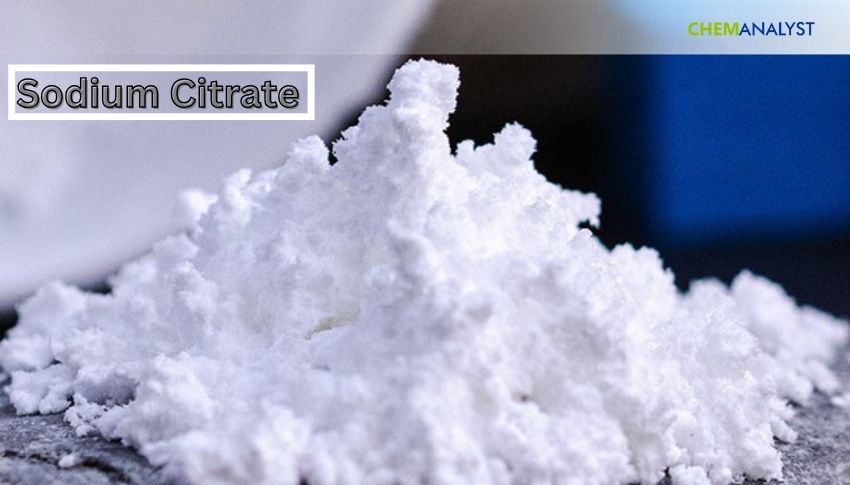Welcome To ChemAnalyst

Import prices of Sodium citrate dihydrate remained elevated across North America during May and June 2025, driven by high citric acid feedstock costs, strong downstream demand, and global supply chain challenges. Limited domestic production, ongoing freight pressures, and resilient demand from the food, pharma, and personal care sectors further supported high pricing. With capacity expansion still pending and imports dominating the market, prices are expected to stay firm into early Q3 unless global citric acid or shipping costs ease.
During May and early-June 2025, import prices for Sodium citrate dihydrate have been consistently high throughout the North American market, propelled by the intricate interaction of international supply losses, higher feedstock costs, and strong downstream demand. One of the central reasons has been the high price of citric acid; the predominant raw material utilized during production of Sodium citrate dihydrate. The world citric acid market has experienced upward cost pressure with the rise in energy prices in major production centers like China and Europe, where most of the Sodium citrate dihydrate is produced. These high input costs have been directly propagated along the value chain, resulting in higher export prices.
Adding to this trend, North America remains import-dependent for its Sodium citrate dihydrate needs, with regional manufacturing capability minimal to balance outward pressures. Asian and European routes have continued to remain under pressure from residual post-pandemic supply chain inefficiencies, increased container shipping costs, and local port bottlenecks. These elements together have placed a premium on the average landed price of imported Sodium citrate dihydrate, especially into the U.S. and Canadian markets.
On the supply side, North America has experienced stable offtake from key end-user industries like food & beverage, pharma, and personal care, where Sodium citrate dihydrate is used widely due to its buffering, emulsifying, and pH-controlling characteristics. The food processing market, especially, has had steady demand in the face of stable consumption patterns and ongoing emphasis on clean-label ingredients. In the pharmaceuticals segment, Sodium citrate dihydrate demand has also been robust owing to continued needs for citrate-based products, supporting further the firm’s-maintained pricing environment for Sodium citrate dihydrate.
During the same time, the local production environment for Sodium citrate dihydrate has proved to be not very responsive in building domestic capacity. Several North American manufacturers are yet to complete facility upgrades or receive regulatory approvals, and any substantial effect is not expected until the second half of the year. The glacial build-out of domestic capacity has left the buyers with no option but to keep depending on imports regardless of unattractive prices with respect to the Sodium citrate dihydrate. Consequently, contract bids and spot prices were at the higher end until the end of June, as buyers and traders were reluctant to trade substantial quantities for Sodium citrate dihydrate against uncertainty in the marketplace.
In the near term, market players expect Sodium citrate dihydrate prices to stay robust in early Q3 unless a major correction in world citric acid prices or freight occurs. In the meantime, the North American market should remain under cost pressure from world factors, a constrained regional supply situation, and unrelenting downstream demand in key sectors.
We use cookies to deliver the best possible experience on our website. To learn more, visit our Privacy Policy. By continuing to use this site or by closing this box, you consent to our use of cookies. More info.
